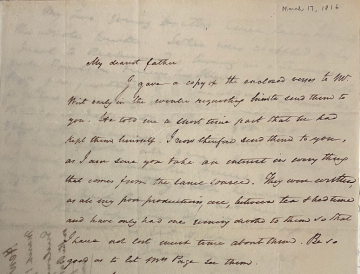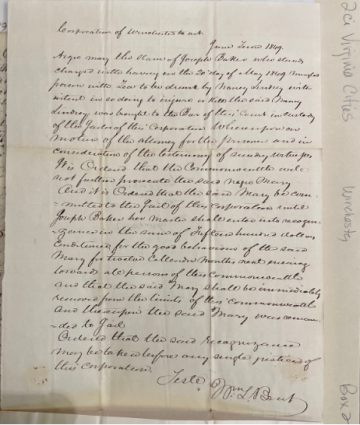Written by Dan Du, PhD, Assistant Professor, University of North Carolina - Charlotte (Special Collections Research Center travel grant recipient, 2023-2024)
Today’s United States is a coffee country. Popular histories often claim that U.S. citizens emerged out of the American Revolution as coffee drinkers, because they had given up tea, the favorite drink in England, for freedom and liberty. However, at William & Mary’s Swem Library, I am searching for the history of tea consumption in the United States after the American Revolution.
This is my second book project on tea. In my previous research on the U.S.-China tea trade, I found that the United States was the second largest tea importer from China, the second largest tea consumer in the West, and the most important buyer and drinker of green and Oolong tea in the nineteenth century. Thus, tea never faded from Americans’ life after the Revolution; instead, tea acquired the status of bread in nineteenth-century America. Therefore, I started to explore how tea was consumed, forgotten, and revived in the United States.

The Mademoiselle Zare’s Papers first drew my attention to the Special Collections Research Center at Swem Library. Mademoiselle Zare was a fortune teller active in the early twentieth century. In addition to crystal balls, tarot cards, palms, and zodiac signs, these fortune tellers also read tea leaves to predict their clients’ fate. In Zare’s papers, she left two notes about how to read tea leaves. Use a wooden bowl decorated with patterns, Zare instructed; when performing fortune telling, “pour off tea and read while tea leaves are on the designs.” Zare did not initiate the performance; she took extensive notes from publications on fortune telling, so her papers at the Swem Library provide more valuable information on how to perform tea cup reading and what types of tea used for the magic.

Reading tea leaves was a popular activity at tea rooms, which emerged as popular restaurants in the United States during the early twentieth century. The association between tea and restaurants reflected the prevalence of tea in American daily lives. In Tucker-Coleman Papers, Maury Family Papers, Tyler Family Papers, Blair, Banister, Braxton, Horner, Whiting Papers, Brown Coalter, Tucker Papers, these families regularly invited their relatives and friends to tea. Not only was tea essential to their social gatherings, but tea was also the evening meal for nineteenth-century Americans. Thus, in a letter to his sister in 1855, Rutson Maury described their activities throughout the entire day, from breakfast and dinner to tea. No wonder tea became a marker of time in the evening, as Henry Tucker composed his stanza usually “between tea & bedtime” in 1816 and Rutson Maury wrote to Mr. George Cummings after Tea in 1870. Given the cruciality of tea in Americans’ everyday life, it is unsurprising that ladies in Norfolk, Virginia complained in 1862 that they were only allowed to buy a pound of tea and a little salt, which was one of the miseries that Virginians suffered during the Civil War.
The Tucker-Coleman Papers, Galt Papers, and Virginia Cities Collection documented not only the family members’ extensive tea consumption, but also the medicinal value of tea. Doctor Thomas Tudor Tucker instructed his relatives to wash their inflamed eyes with strong tea in 1789 and 1802. George P. Upshur recommended hot tea to a member of the Tucker family who suffered from scrofula. Likewise, a sick member of the Galt family could drink nothing but tea and milk. While tea healed, it could also kill or injure its drinkers. In 1849, the Commonwealth of Winchester accused Mary, an African American enslaved by Joseph Baker, of trying to kill or injure Nancy Lindsey with poison in the tea drunk by the latter. The Galt Family’s correspondence also reported a similar case in 1810. Seven members of the Booth family were ill after taking tea, allegedly caused by the poison put in the teakettle. The prevalence of tea drinking provided opportunities for these poisoning cases.

Owing to its popularity, tea consumption helped weave a commercial network in the United States. The Skipwith Family Papers, Richard Blow Papers, Garth Family Papers, and the Meridian Coffeehouse Records contain accounts and receipts, documenting the purchases of tea and teaware from various places, such as Petersburg and Baltimore. Their favorites were green teas from China, notably Hyson, Imperial, Young Hyson. They bought tea kettles, porcelain (“tea china”) or bone china tea ware, spoons, and tea caddies to serve or preserve their tea. Tea caddies were also valuable gifts in the eighteenth and nineteenth centuries, for Rutson Maury selected a tea caddy from many options as a wedding gift for a bride in Liverpool. Tea in canisters still made a splendid holiday present in the twentieth century.

